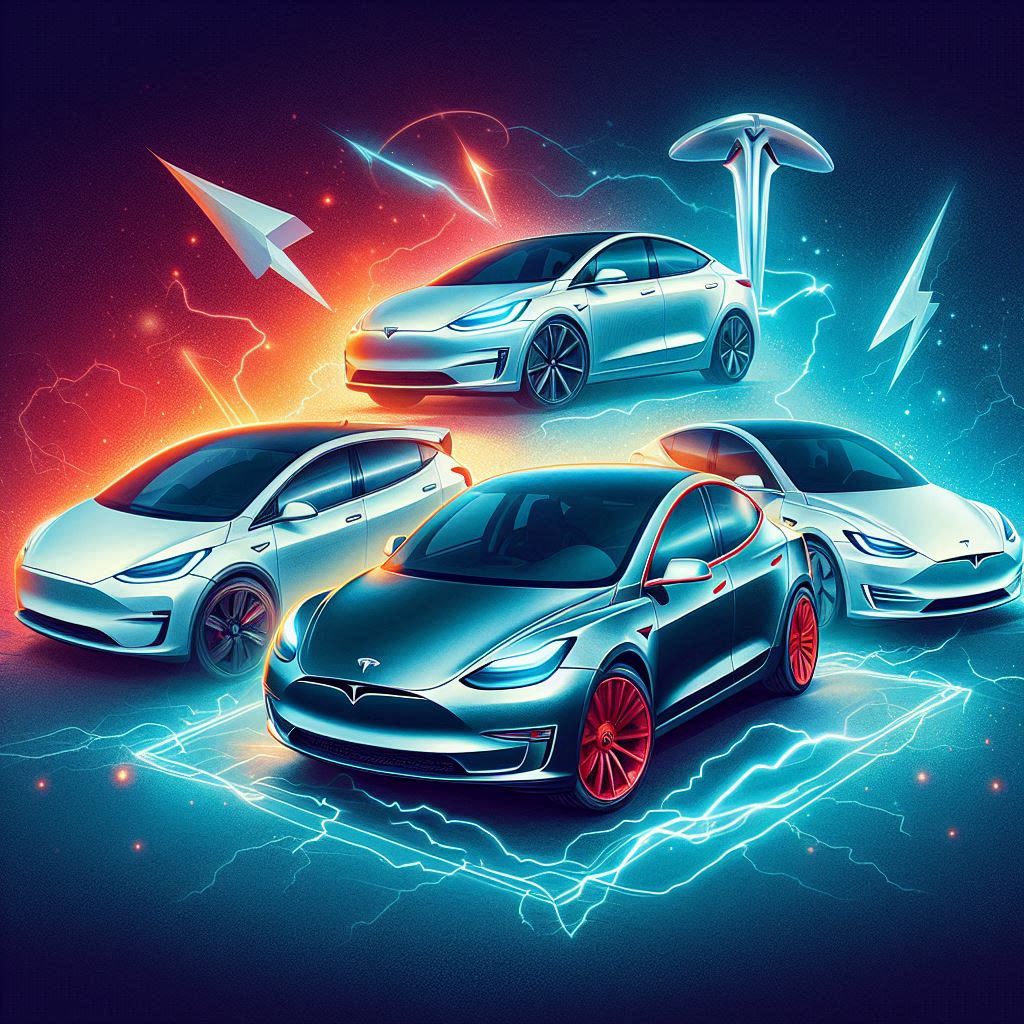The automotive industry is in the midst of a revolution, with electric vehicles (EVs) emerging as a viable alternative to internal combustion engine (ICE) vehicles. As concerns about environmental impact and fuel dependency grow, EVs are gaining traction among consumers worldwide. But the question remains—can electric vehicles truly replace ICE cars and become every household’s favorite? Let’s delve into this debate and examine the pros, cons, and future of these two technologies.
Table of Contents
- Want To Know More About EV
- EVs vs ICE: A Comparative Analysis
- Why EVs Could Be Every Household’s Favorite
- Challenges Faced by EVs
- Will EVs Replace ICE Vehicles?
- Conclusion
- The Indian EV Market: A Quick Overview
- Tata Motors: The Homegrown Champion
- Hyundai: The Global Giant with Local Aspirations
- Tesla: The Disruptive Innovator
- Who Will Dominate?
- Conclusion

Want To Know More About EV
Charging Your Drive with Electrifying Insights?
EVs vs ICE: A Comparative Analysis
Performance
ICE vehicles have long been synonymous with raw power and driving thrill. Their engines deliver the kind of acceleration and speed that fuel automotive enthusiasts’ passions. On the other hand, EVs offer smooth and instant torque, providing seamless acceleration and quieter driving experiences. While ICE cars cater to those seeking adrenaline-packed rides, EVs focus on refinement and efficiency.
Fuel Economy
Fuel economy is where EVs shine. Charging an EV costs significantly less than refueling an ICE car, and EVs are far more energy-efficient. ICE vehicles, however, vary in fuel efficiency based on engine type and driving conditions, which often results in higher expenses.
Maintenance
ICE vehicles require regular oil changes, filter replacements, and engine tuning, adding to long-term ownership costs. In contrast, EVs have fewer moving parts, making them easier and cheaper to maintain. However, the lifespan and replacement cost of EV batteries remain a concern for many buyers.
Why EVs Could Be Every Household’s Favorite
Eco-Friendliness
EVs have the undeniable advantage of being environmentally friendly. With zero tailpipe emissions, they offer a solution to the pollution caused by ICE vehicles. As the world grapples with climate change, the push for sustainable transportation has put EVs in the spotlight.
Government Incentives
Many governments are actively promoting EV adoption through subsidies, tax exemptions, and investments in charging infrastructure. In India, initiatives like FAME (Faster Adoption and Manufacturing of Hybrid and Electric Vehicles) are making EVs more accessible.
Long-Term Savings
EVs eliminate the need for petrol or diesel, allowing households to save on fuel costs. While the upfront cost of EVs is higher, the long-term savings in maintenance and fuel expenses can offset this initial investment.
Challenges Faced by EVs
Charging Infrastructure
One of the major hurdles for EVs is the lack of widespread charging stations, especially in developing countries. Unlike ICE vehicles that can be refueled at easily accessible petrol pumps, EV owners often struggle with limited charging options.
Battery Limitations
EV batteries face challenges in terms of range, charging time, and degradation over time. While advancements in battery technology are underway, these limitations still pose concerns for consumers accustomed to the convenience of ICE vehicles.
Initial Cost
EVs are more expensive upfront compared to ICE vehicles. Although government subsidies help reduce this gap, the higher price point can be a deterrent for budget-conscious buyers.
Will EVs Replace ICE Vehicles?
EVs are undoubtedly gaining popularity, but ICE vehicles still hold a significant place in the market. The transition from ICE to EVs depends on overcoming challenges such as charging infrastructure, battery technology, and consumer awareness. Brands like Tesla, Tata Motors, and Hyundai are pushing the boundaries of EV innovation, making them more appealing to a wider audience.
Conclusion
While EVs are paving the way for sustainable transportation, their adoption is a journey rather than a leap. The unique advantages of EVs, coupled with technological advancements and government support, make them a promising choice for the future. However, ICE vehicles continue to be a favorite for their power, convenience, and affordability.
So, will electric vehicles become every household’s favorite? The answer lies in how the automotive industry addresses current challenges and meets consumer expectations.
What’s your verdict—are EVs the future of your household?
Ayush, this version brings a professional tone and detailed insights, perfect for your blog! Feel free to tweak it further or add visuals for more engagement. 😊
Tata, Hyundai, And Tesla: Who Will Dominate India’s Ev Market? ispe 1000 words me blog post bna kr do detail se
Here’s a detailed 1000-word blog post for your title: “Tata, Hyundai, and Tesla: Who Will Dominate India’s EV Market?”
Tata, Hyundai, and Tesla: Who Will Dominate India’s EV Market?
India’s automotive sector stands at a crossroads, with electric vehicles (EVs) taking center stage as the future of mobility. The government’s push toward greener transportation, along with rising awareness about environmental issues, has sparked fierce competition among automakers. Among the frontrunners vying for dominance in India’s burgeoning EV market are three giants—Tata Motors, Hyundai, and Tesla. But who is best positioned to take the crown? Let’s explore their strategies, strengths, and the challenges they face.
The Indian EV Market: A Quick Overview
India, being the world’s fifth-largest automobile market, is witnessing an EV revolution. With government initiatives like the FAME II scheme (Faster Adoption and Manufacturing of Hybrid and Electric Vehicles) and state-specific subsidies, EV adoption is steadily increasing. Additionally, rising fuel prices and climate change concerns have made EVs more appealing to consumers.
However, challenges such as high upfront costs, limited charging infrastructure, and range anxiety persist. Despite these hurdles, analysts predict that India’s EV market could grow at a CAGR of over 40% between 2021 and 2030. This growth trajectory has attracted major players like Tata, Hyundai, and Tesla.
Tata Motors: The Homegrown Champion
Current Position and Achievements
Tata Motors has emerged as a leader in India’s EV space, thanks to its first-mover advantage and strong focus on affordable electric vehicles. With models like the Nexon EV, Tigor EV, and Tiago EV, Tata has already captured over 80% of the domestic EV market share. The Nexon EV, in particular, has been a game-changer, offering a blend of affordability, performance, and reliability.
Strengths
- Affordability: Tata’s EVs are priced to cater to the middle class, which forms the backbone of India’s car-buying population.
- Local Manufacturing: Being a homegrown brand, Tata benefits from local manufacturing, which reduces costs and ensures better supply chain management.
- Wide Service Network: Tata’s extensive network of dealerships and service centers gives it an edge over competitors.
- Focus on Sustainability: Tata has invested heavily in EV-specific technologies and sustainable solutions through its subsidiary, Tata Passenger Electric Mobility Limited.
Future Plans
Tata aims to expand its EV portfolio with ten new electric models by 2026. The company is also working on improving battery technology and increasing its production capacity. Moreover, Tata is collaborating with sister companies like Tata Power to establish EV charging stations across the country, addressing one of the biggest barriers to EV adoption.
Hyundai: The Global Giant with Local Aspirations
Current Position and Achievements
Hyundai has carved a niche for itself in India’s premium EV segment with the Kona Electric. Although the Kona has not achieved the same volume success as Tata’s offerings, it has set benchmarks for quality and performance. Hyundai recently launched the Ioniq 5, a high-end EV that showcases the brand’s commitment to cutting-edge technology.
Strengths
- Global Expertise: As a global leader in EV innovation, Hyundai brings a wealth of experience to the Indian market.
- Premium Offerings: Hyundai targets a different demographic than Tata, focusing on consumers who prioritize features and brand value over cost.
- Strong Brand Reputation: Hyundai enjoys a solid reputation in India, thanks to its popular ICE models like the Creta and i20.
Challenges
- High Pricing: Hyundai’s EVs are priced higher than Tata’s, making them less accessible to the average Indian consumer.
- Limited Local Manufacturing: Unlike Tata, Hyundai imports some components, which increases costs and could be a disadvantage in a price-sensitive market.
Future Plans
Hyundai has announced plans to invest ₹4,000 crore in India to develop six EVs by 2028. The company is also exploring partnerships to build a robust EV ecosystem, including battery recycling and localized production of key components.
Tesla: The Disruptive Innovator
Current Position and Challenges
Tesla, a global icon in the EV space, has long been eyeing the Indian market. Although the company is yet to officially launch its vehicles in India, its brand value and reputation for innovation have already created a buzz. Tesla’s Model 3 and Model Y are expected to be among the first offerings for Indian consumers.
However, Tesla faces significant challenges, including high import duties, lack of local manufacturing, and competition from established players like Tata and Hyundai.
Strengths
- Technology Leadership: Tesla’s vehicles are known for their advanced features, including Autopilot and over-the-air updates.
- Brand Prestige: Owning a Tesla is considered a status symbol, which could attract India’s affluent and tech-savvy buyers.
- Supercharger Network: Tesla’s proprietary Supercharger technology offers rapid charging, although its rollout in India remains uncertain.
Challenges
- Pricing: Tesla’s premium pricing could limit its appeal in a cost-sensitive market like India.
- Local Adaptation: To compete effectively, Tesla needs to localize production and cater to the unique needs of Indian consumers.
Future Plans
Tesla CEO Elon Musk has hinted at establishing a manufacturing facility in India, provided the company receives favorable policy support. If this happens, Tesla could revolutionize the Indian EV market with its cutting-edge technology and innovative business model.
Who Will Dominate?
Tata’s Edge
Tata Motors is currently the leader, thanks to its affordable pricing and local focus. The company’s ability to address the needs of middle-class consumers and its aggressive expansion plans position it as the favorite for market dominance.
Hyundai’s Strategy
Hyundai’s global expertise and premium offerings cater to a different segment of the market. While it may not challenge Tata in terms of volume, it is well-positioned to dominate the premium EV segment.
Tesla’s Potential
Tesla’s entry could disrupt the market, especially if the company invests in local manufacturing. However, its success will depend on its ability to navigate India’s regulatory landscape and adapt to local consumer preferences.
Conclusion
The race to dominate India’s EV market is far from over. Tata Motors currently holds a strong position, but Hyundai and Tesla have the potential to carve out significant niches. While Tata focuses on affordability and local manufacturing, Hyundai bets on premium features, and Tesla aims to bring disruptive innovation.
In the end, the winner will be the company that successfully addresses India’s unique challenges—be it charging infrastructure, affordability, or consumer awareness. For now, the competition among Tata, Hyundai, and Tesla is shaping the future of mobility in India, and consumers are the ultimate beneficiaries.
If you want to get any more information, then follow my Instagram account

